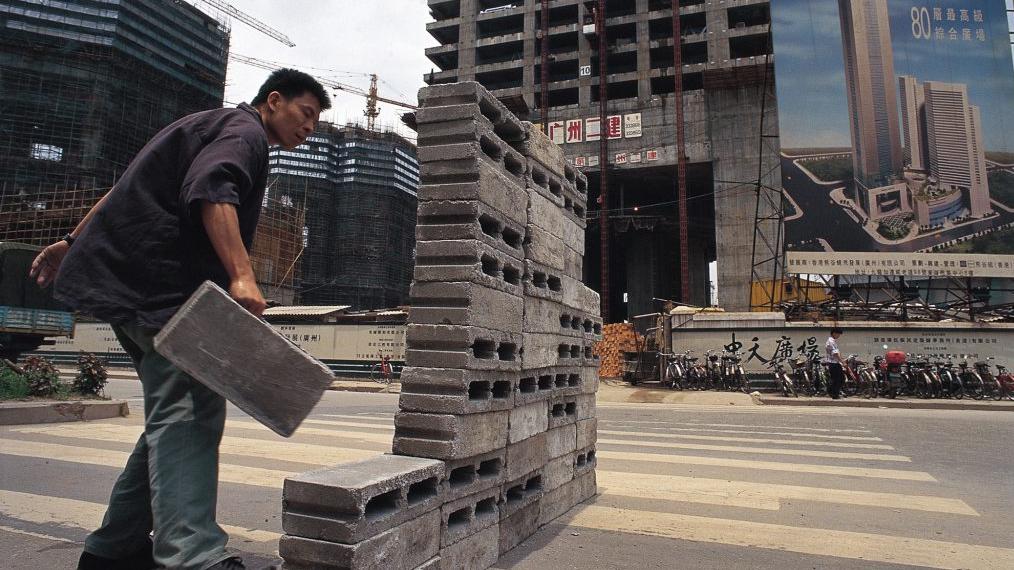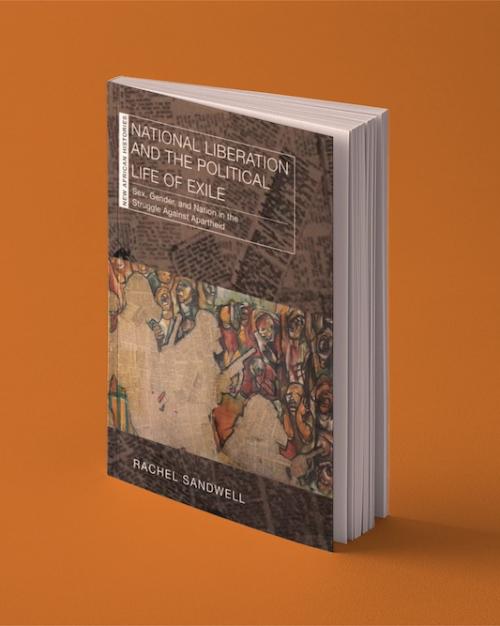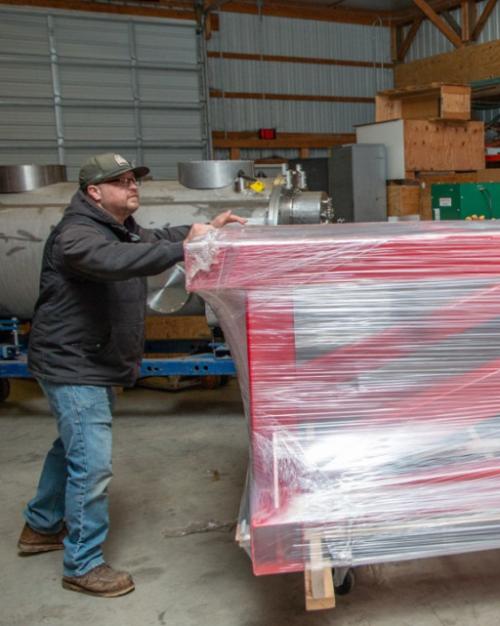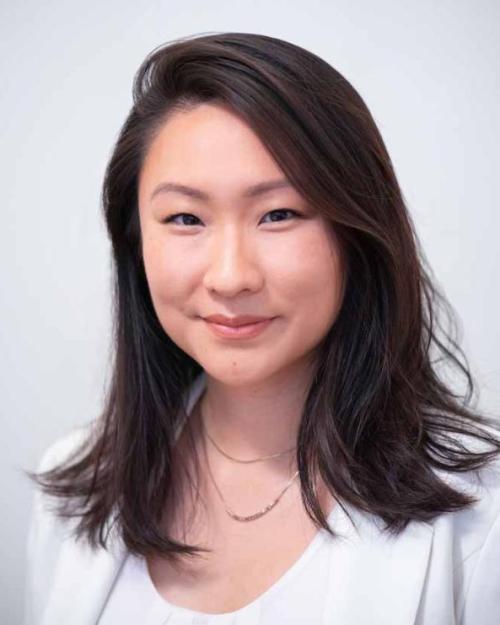In the photo, the man’s forearms are muscular and glisten with sweat as he grips a cement block with one hand. He wears plain, loose clothing. He focuses intensely on his task, building a wall. In the background, the frame of a building looms and next to it a poster illustration of what it will someday be: the tallest skyscraper in Guangzhou, China.
This photo of a construction site does not depict a moment of urban industry, but rather a work of art, according to art historian Nancy P. Lin. In 1995, she said, artist Lin Yilin performed “Safely Maneuvering across Lin He Road,” an ephemeral piece of performance art, by constructing a cement block wall on one side of a busy road, then moving the wall brick by brick across the road. The action was staged at this location to engage directly with the massive social, cultural and physical changes taking place in China during the 1990s.
“The work is deceptively simple,” said Lin, a Klarman Postdoctoral Fellow in history of art and visual studies in the College of Arts and Sciences (A&S). “It’s not extravagant or spectacular. You can see he’s dressed almost like an everyday laborer. I’m interested in what kind of impact this work has on the site and the social context.”
Lin, a New Yorker who was born in Taiwan, brings her fascination with urban spaces to her work as an art historian. She is using her three-year Klarman Fellowship to study artworks that take place on-site in urban spaces like city streets and construction sites. Her work in the Wen Pulin Archive of Chinese Avant-Garde Art, a Cornell Libraries collection, and conversations with scholars in diverse departments across the university will contribute to the book she’s writing about on-site artworks created in China in the 1990s, a time of unprecedented urbanization and social change.
“Nancy is looking at Chinese contemporary art, which is among the most vital in the world today,” said Iftikhar Dadi, the John H. Burris Professor of History of Art (A&S) and an expert on contemporary art in South and West Asia. “The period she is studying, the turn of the twenty-first century, was a time of rapid transition and a time of exciting and important art practices.”
The Cultural Revolution ended in the late 1970s, Lin noted, and the next two decades brought social and economic reforms that peaked in the 1990s.
“The urban environment was changing at a drastic scale,” Lin said. “Artists decided it wasn’t enough to do art in their studios and try to show it in a museum or gallery. They wanted to create art that was actually on the streets, that was part of their everyday life, that reflected these urban changes and social realities, and also could engage everyday audiences, not just people who were already interested in art.”
On-site, one-time artworks challenge a more traditional approach to art history, Lin said, in which the scholar examines an art object and researches its place, time period, and culture to better understand the object. Here, site, or the context, is treated as a static entity.
“I think of the site not as something out there in the world, but as something that’s transformed in some way by the art,” Lin said. “Art and site are in a dynamic. They come together to create something, to activate something latent in each other.”
For example, Lin Yilin’s on-site performance work “Safely Maneuvering across Lin He Road” highlights significant aspects of concrete as a material and of the nearly invisible labor of the city’s migrant construction workers and raises questions of what constitutes productivity, said Lin. The busy city street also creates a fascinating dynamic, Lin said, as cars have to move around the impromptu wall, leading her to ask, “how do these art interventions reshape the way the city moves?”
To do her research, Lin conducts interviews with artists, primarily in Chinese, and researches art archives, mainly the Asia Art Archive in Hong Kong.
“I take the interview, the archival material, what’s been written, my own thoughts and I merge them together to tell a story about the work,” Lin said.
Dadi noted that Lin is well-positioned to research Chinese contemporary art. “She completed her Ph.D. at the University of Chicago under a leading authority in the field. And you need to access the archives, interview the artists and participants, and possess requisite language skills,” he said. “Nancy is an important emerging scholar in this area.”
Lin’s studies bring her into contact with scholars from across Cornell, including: Eli Friedman, associate professor of international and comparative labor in the School of Industrial and Labor Relations; Thomas Campanella, professor of city and regional planning in the College of Architecture, Art and Planning; and An-Yi Pan, associate professor of history of art and visual studies (A&S) specializing in East Asia.
In spring 2023, Lin plans to invite these scholars and more to contribute their points of view to “Urbanized Interfaces,” a class she is scheduled to teach about intersections of art, architecture and urbanism at the turn of the 21st century.
Lin has also been fully engaged within the Department of History of Art and Visual Studies, Dadi noted; in particular, she’s revived a workshop where faculty and graduate students share research-in-progress.
The Klarman fellowship brings Lin into an even more diverse community of scholars whose points of view she values; among her cohort are an economist, an animal behavior scientist and a string theorist. “Being able to communicate with people outside your field is essential to becoming a great scholar,” Lin said.
Lin hopes her work contributes to a more nuanced understanding of contemporary China.
“I think we, in the West, have a perception that there are many restrictions on civil rights in China, and rightly so. But at the same time, there are many vibrant forms of expression in the public sphere,” Lin said. “My research makes these legible and also sheds light on some unexpected, more subtle, yet equally powerful forms of cultural expression in public spaces.”





